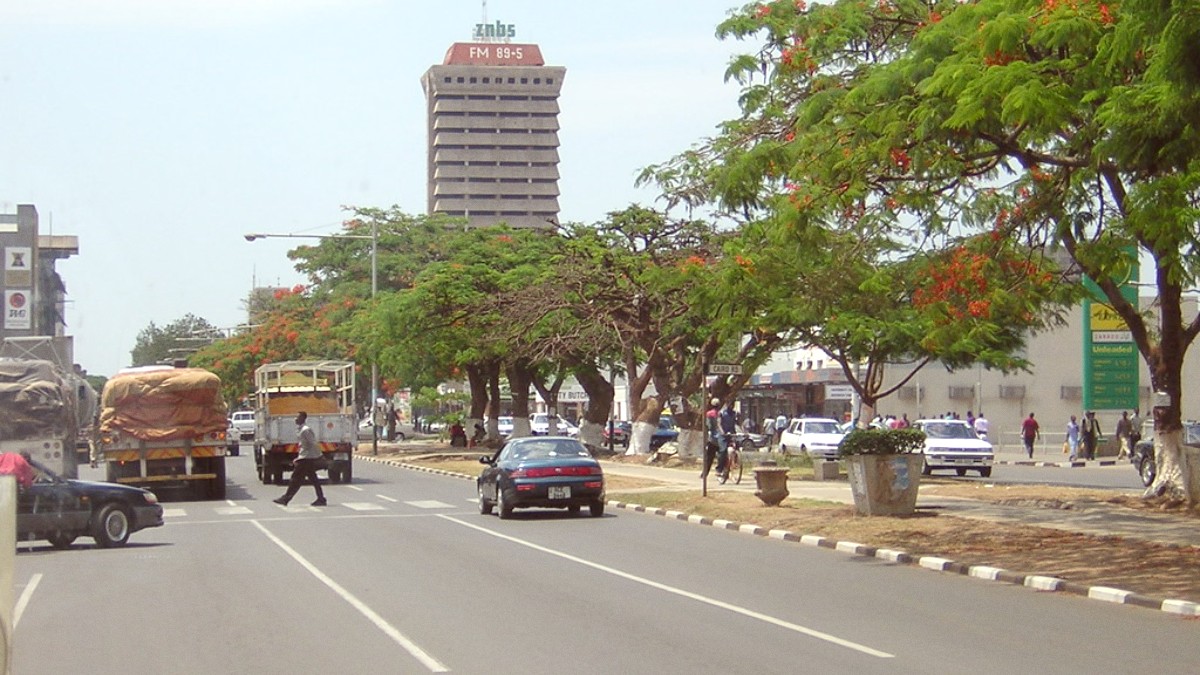
Zambia
The Cool Dry Season (May to August) sees temperatures from 10°C to 25°C (50°F to 77°F). Days offer consistent sun and pleasant conditions for outdoor exploration. Nights turn cool, sometimes calling for a light jacket or sweater. Humidity levels stay very low, and rainfall is nearly absent. Clear, blue skies prevail.
The Hot Dry Season (September to November) brings temperatures from 25°C to 35°C+ (77°F to 95°F+). Heat builds progressively, and humidity increases closer to the rains. Rainfall remains minimal. This period feels intense, specifically midday, and needs careful hydration and sun protection.
High Season (May to August): Ideal weather for city exploration, comfortable temperatures, low humidity. This period also matches prime wildlife viewing season in Zambia's national parks, fitting onward travel to safari destinations. The lack of rain leads to better road conditions outside the city.
Shoulder Season (April, September, October): Fewer crowds, potentially lower prices for flights and lodging. April presents a lush, green landscape after the rains, with pleasant temperatures. September and October, while hot, serve as transitional months for those seeking a balance of fewer crowds and manageable weather before the peak wet season. Low Season (November to March): Landscape turns lush and green, offering striking photographic opportunities. Prices for accommodations and tours are generally lower due to reduced demand. Excellent for birdwatching, as migratory birds arrive. Fewer tourists provide a more personal experience.
Nov-Mar
Can be uncomfortable for some visitors.
Heavy rainfall may render unpaved roads inaccessible or slow journeys.
May-Aug
Higher demand for flights and accommodation.
Expect more tourists, especially at major attractions.
Wet Season Flooding
Offers striking photographic opportunities and excellent birdwatching.
Heavy downpours in Dec-Mar lead to temporary disruptions in traffic.
The Cool Dry Season (May-August) presents the most comfortable weather for walking, market exploration, and visiting city attractions. Lower humidity and moderate temperatures make extended time outdoors comfortable.
The Dry Season (May-October) is optimal for safaris. Water sources shrink, causing animals to gather around remaining waterholes, making sightings easier. Thinner vegetation also improves visibility. If a safari is your main goal, align your Lusaka visit with these months.
Wet Season (Nov-Mar) for migratory birds and breeding plumage.
Wet Season for lush, green landscapes.
Cool Dry Season for pleasant outdoor conditions.
Shoulder Season (April, Sept-Oct) for fewer tourists.
Low Season (Nov-Mar) with generally lower prices.
Travelers entering Zambia need various documents. Knowledge of the visa process aids a smooth arrival. Requirements vary by nationality and visit purpose.
Zambia offers different visa categories to suit various travel needs.
Methods for obtaining your Zambian visa.
Upon arrival, present your passport, visa, and documents. Officers stamp your passport. This process is usually straightforward but may involve queues. Visa fees vary; a single-entry tourist visa is often around USD 50.
Managing your finances forms a practical aspect of trip planning. This guide presents estimated daily costs in US dollars, excluding major tours or safaris, focusing on expenses within Lusaka.
Budget Traveler: USD 40-70 per day. This includes basic guesthouses (USD 15-30), local eateries (USD 10-20), and shared transport (USD 5-10). Activities will be low-cost or free, like market visits.
Mid-range Traveler: USD 80-150 per day. Comfortable guesthouses (USD 40-80), mix of local and mid-tier international restaurants (USD 30-50), and private taxis or ride-sharing (USD 10-20). Includes paid attractions.
Price ranges per night for various accommodation types in Lusaka.
Hostel/Guesthouse: USD 15 - 40
Luxury Hotel: USD 150 - 400+
Typical price ranges per meal in Lusaka.
Local Eatery/Street Food: USD 3 - 7
Fine Dining: USD 30 - 60+
Price estimates for getting around and seeing sights within Lusaka.
Local Minibus Taxi: < USD 1 - 2 (per ride)
Wildlife Park Entry: USD 10 - 20
| Category | Customary Tip | Notes |
|---|---|---|
| Restaurants | 5-10% of the bill | Not compulsory, but appreciated. Check for included service charges. |
| Tour Guides/Drivers | USD 5-10 per person per day | Adjust based on service quality and excursion duration. |
| Hotel Staff | USD 1-2 | For porters or housekeepers. Leave in room for housekeepers. |
Being informed about health risks, safety measures, and emergency procedures forms a valuable part of travel planning.
Certificate needed for travelers from/transiting through at-risk countries.
Consult a travel health clinic 4-6 weeks before for routine vaccinations (Hepatitis A/B, Typhoid, Rabies).
Lusaka carries a low to moderate risk; discuss antimalarial medication with your doctor.
Mosquito-borne disease prevention is .
Use Insect repellent with DEET (30-50%) or Picaridin. Sleep under a Mosquito net if windows are not screened or AC is absent. Wear long sleeves and pants at dawn and dusk. Consider prescribed antimalarial drugs.
The sun in Zambia is strong. Use High-SPF sunscreen, wear a Wide-brimmed hat and Sunglasses. Stay hydrated. Seek shade during peak sun hours (10:00 AM to 4:00 PM).
Bilharzia: Avoid swimming or wading in freshwater lakes or rivers due to parasites.
Private hospitals (Lusaka Trust, Medlands, Fairview) offer better care than public facilities. They may ask for upfront payment or insurance proof.
Police: 991 | Fire: 993 | Ambulance: 992. Response times can be slow; private transport to a hospital is often quicker for serious medical situations.
Do NOT drink tap water. Rely on sealed Bottled water. Exercise caution with street food; choose busy stalls where food is freshly cooked. Carry Hand sanitizer.
Lusaka has a moderate crime rate. Awareness of common issues is important.
Travel insurance is highly recommended. Lusaka is not prone to major natural disasters, but localized flooding can occur during the wet season.
Ensure medical emergencies, evacuation, trip cancellation, and lost luggage are covered. Confirm adventure activities if planned.
Main hazard: localized flooding during the wet season (Dec-Mar), which may disrupt traffic. Monitor local weather reports.
Keep photocopies or digital copies of passport, visa, and insurance policy separate from originals.